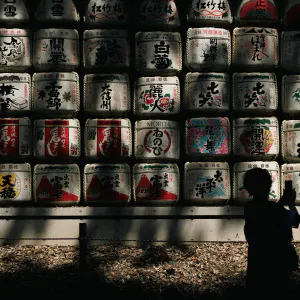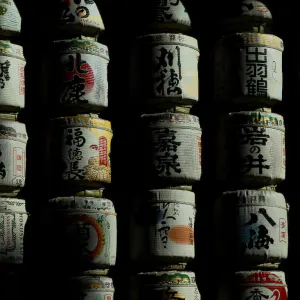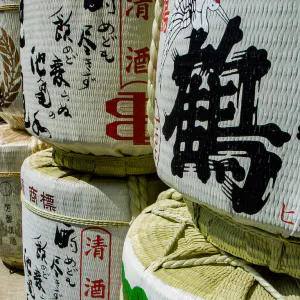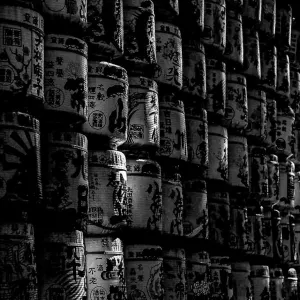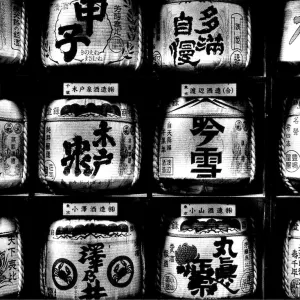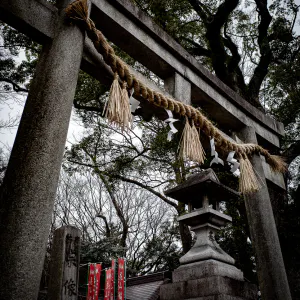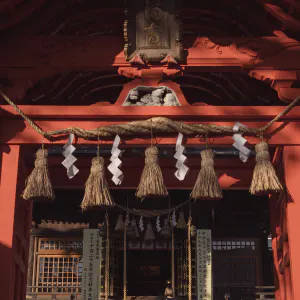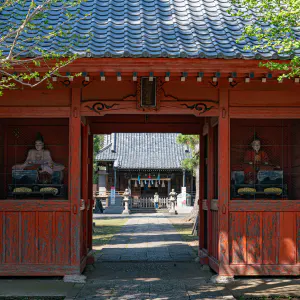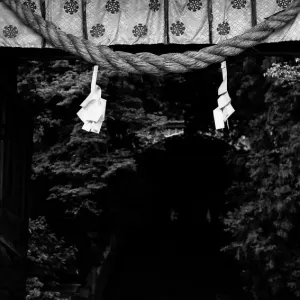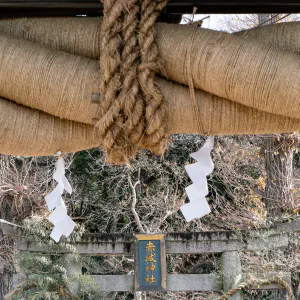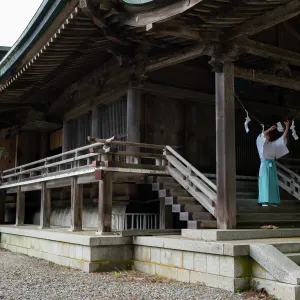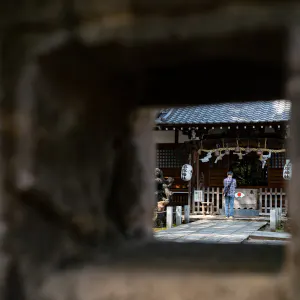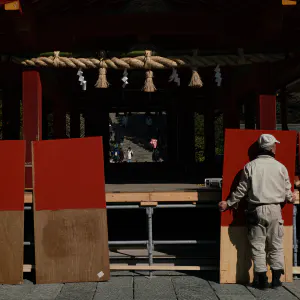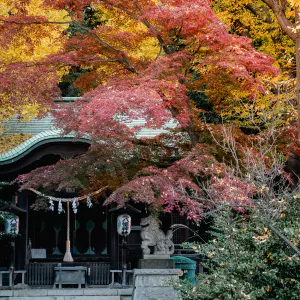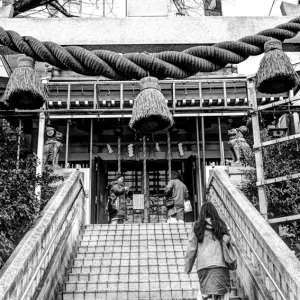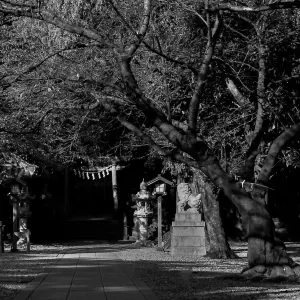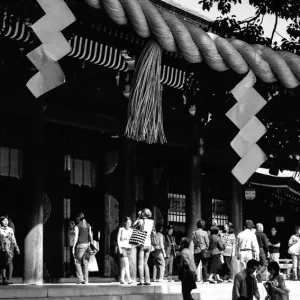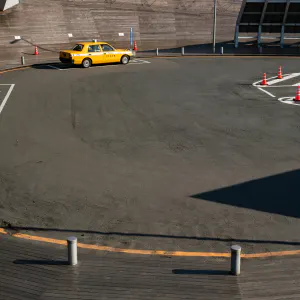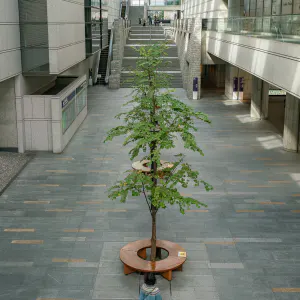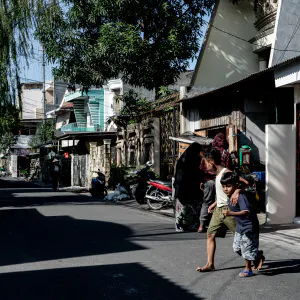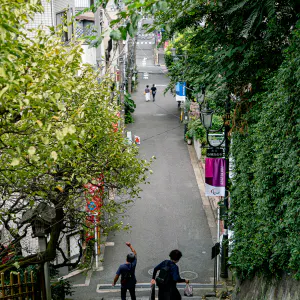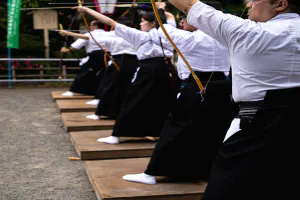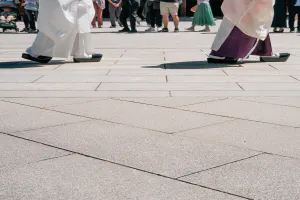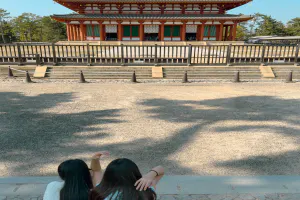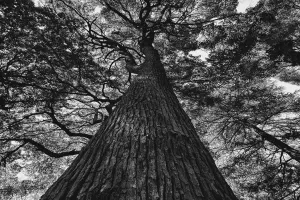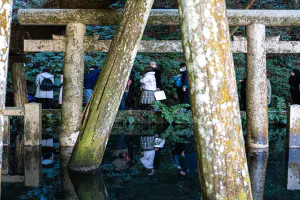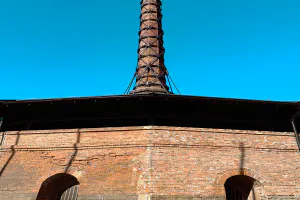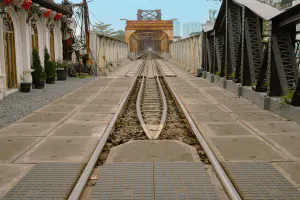The shrine gate of Takeisao Jinja can be seen beyond the hall of worship, which looks like a Noh stage
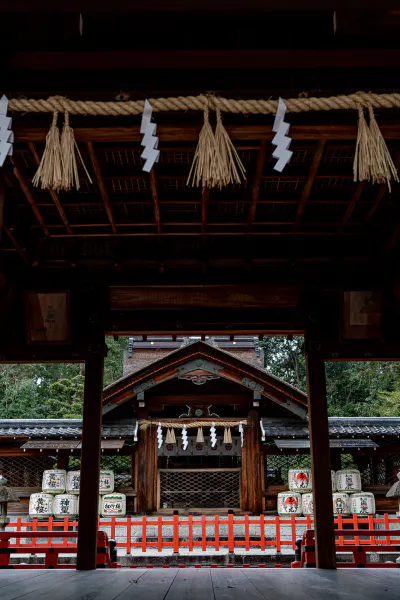
Climbing up the stairs, I found the shrine office, and after climbing more stairs, I reached the prayer hall. Beyond the hall with its wooden floor, I could see the Shin-mon gate. Beyond that is the main shrine. This is the Takeisao Jinja Shrine in Funaokayama, Kyoto, which is dedicated to Oda Nobunaga.
Oda Nobunaga lost his life in the Honnoji Incident in 1582. With that in mind, it would seem that this shrine has been in existence for a long time, but that is not the case. This shrine was built in 1870, about 300 years after Oda Nobunaga died and after the Meiji Restoration was over. It is said that the Emperor Meiji declared the shrine to be established in recognition of Oda Nobunaga's great achievements in unifying the country and reviving the dynasty during the turbulent warring states period.
I'm sure I'm not the only one who feels a little strange that the decree was made about 300 years after his death, in 1870, when the restoration of imperial rule had ended, but before the abolition of feudal domains and the order to cut hair and remove swords. It was probably because the world was still unstable due to the confusion after the Meiji Restoration that such a decree was made. However, in spite of the wishes of the Emperor Meiji, the Saga Rebellion of 1872 was the beginning of a series of samurai rebellions against the new government, including the Kamifuren Rebellion, the Akizuki Rebellion, and the Hagi Rebellion, and the Satsuma Rebellion, the largest civil war in Japan, began in 1877.
| May 2021 ARCHITECTURE KYOTO | |
| BARREL GATE KYOTO CITY SHIMENAWA SHRINE |
PHOTO DATA
No
11893
Shooting Date
Feb 2020
Posted On
May 1, 2021
Modified On
August 25, 2023
Place
Takeisao Jinja, Kyoto
Genre
Architectural Photography
Camera
SONY ALPHA 7R II
Lens
ZEISS BATIS 2/40 CF
